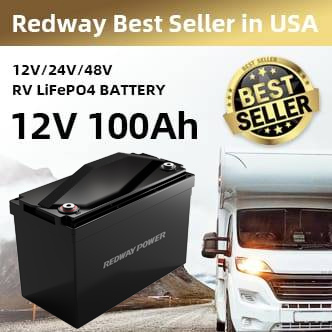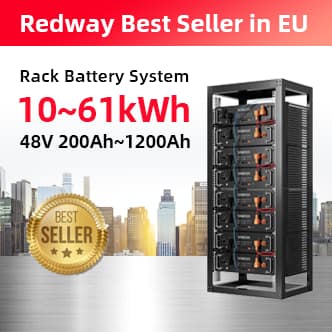Industrial forklift batteries form the backbone of modern material handling operations, combining robust power delivery with evolving energy technologies. As warehouses and distribution centers intensify operations, understanding battery types, maintenance practices, and lifecycle management becomes critical for maximizing efficiency and minimizing costs. This guide explores key considerations for selecting, maintaining, and optimizing forklift batteries while addressing common operational challenges.
Forklift Battery Types: Lead-Acid vs. Lithium-Ion Dominance
The industrial forklift market primarily relies on two battery chemistries: traditional lead-acid and advanced lithium-ion systems. Lead-acid batteries dominate 68% of the market due to their lower upfront costs (30-50% cheaper than lithium-ion) and established recycling infrastructure. These flooded batteries require weekly water maintenance to prevent plate exposure and sulfation, making them ideal for single-shift operations where charging schedules align with 8-hour workdays.
Lithium-ion batteries are disrupting the sector with 3x faster charging cycles (2-3 hours vs. 8-10 hours) and 2-3x longer lifespans. Though 2-3x more expensive initially, they eliminate watering needs and tolerate partial charging – a game-changer for multi-shift facilities. A 2023 study by GreenTech Logistics found warehouses adopting lithium-ion reduced energy costs by 22% through opportunity charging during breaks.
| Feature | Lead-Acid | Lithium-Ion |
|---|---|---|
| Cycle Life | 1,500-2,000 cycles | 3,000+ cycles |
| Charge Efficiency | 80-85% | 95-98% |
| Operating Temperature | 10°C to 40°C | -20°C to 60°C |
Optimizing Charging Protocols for Peak Performance
Proper charging practices directly impact battery longevity and operational uptime. Lead-acid batteries require full discharge-charge cycles to prevent sulfation, while lithium-ion thrives on partial top-ups. Temperature-controlled smart chargers that adjust voltage based on battery state can extend lead-acid life by 18% according to BHS Industrial data.
Implement three-stage charging for lead-acid systems:
- Bulk Charge: Rapidly restores 80% capacity at maximum voltage
- Absorption: Slower charge to 95% capacity
- Float: Maintenance charge prevents self-discharge
Our clients achieve 15% longer battery life through scheduled equalization charges that balance cell voltages,” notes Redway Battery engineer Mark Sullivan.
Maintenance Strategies to Prevent Downtime
Proactive maintenance reduces replacement costs by 20-30% across battery types. For lead-acid batteries:
- Check electrolyte levels weekly – maintain ¼” above plates
- Clean terminals monthly with baking soda solution
- Perform equalization charges every 30-50 cycles
Lithium-ion systems require minimal upkeep but benefit from:
- Monthly capacity tests using battery management systems (BMS)
- Storage at 30-50% charge for long-term inactivity
- Firmware updates for optimized charging algorithms
When to Replace: Key Performance Indicators
Monitor these signs for battery replacement:
- Capacity Drop: Runtime below 80% of original spec
- Voltage Sag: >10% drop under load
- Physical Damage: Swollen cases, terminal corrosion
Average replacement timelines:
- Lead-acid: 3-5 years (1,500-2,000 cycles)
- Lithium-ion: 7-10 years (3,000+ cycles)
Safety First: Handling Best Practices
Prevent accidents with these protocols:
- Wear PPE (goggles, acid-resistant gloves) during maintenance
- Install hydrogen gas detectors in charging areas
- Use insulated tools for lithium-ion repairs
- Implement spill kits with neutralization agents
Sustainability Through Recycling & Repurposing
Modern recycling programs recover 98% of lead-acid components and 85% of lithium-ion materials. Repurposed batteries find new life in:
- Solar energy storage systems
- Backup power for security systems
- Electric vehicle charging stations
Major manufacturers like Toyota now offer battery buyback programs, providing 15-25% credit toward new purchases when returning spent units.
Expert Insights: Future Battery Innovations
“Solid-state lithium-metal batteries could double energy density by 2030 while eliminating thermal runaway risks,” predicts Dr. Emma Chen of MIT’s Energy Lab. “Meanwhile, AI-driven battery management systems will predict failures 30 days in advance using charge cycle analytics.”
Frequently Asked Questions
- Can I retrofit lithium-ion batteries into older forklifts?
- Yes, but requires voltage regulator upgrades and BMS integration. Consult OEMs for compatibility checks.
- How much weight does battery choice affect?
- Lithium-ion packs weigh 30-40% less than equivalent lead-acid units, improving forklift maneuverability.
- What’s the true cost difference over 10 years?
- Lithium-ion TCO averages 40% lower considering energy savings, labor reduction, and lifespan.
Conclusion
Selecting between lead-acid and lithium-ion forklift batteries requires analyzing operational intensity, budget parameters, and sustainability goals. While lithium-ion offers superior performance in demanding environments, lead-acid remains cost-effective for lighter use cases. Implementing smart charging infrastructure, preventive maintenance, and recycling programs ensures maximum ROI regardless of chemistry choice. As battery technologies evolve, data-driven management will become the cornerstone of efficient warehouse operations.



